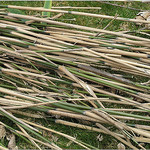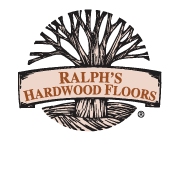Bamboo flooring is an increasingly popular choice for homeowners who want to install finished wood floors.

Actually, bamboo isn’t wood—it’s a grass. Through manufacturing techniques, the grass has been sliced into reeds, bonded together with adhesive, and sawn into planks, which allows it to be used in place of real hardwood. Driving its recent upsurge in popularity is the perception—encouraged by bamboo flooring manufacturers—that bamboo is a more environmentally friendly option than actual hardwood.
But is bamboo really a “greener” selection than traditional finished wood flooring?
To answer this question, let’s look at three crucial elements that go into determining how eco-friendly a flooring product truly is.
1. Sustainability
The key point made by bamboo proponents is that bamboo grows back after five to seven years—as compared to the 70 or 80 years it takes for most hardwoods to reach harvesting size. The argument is that this faster regeneration is better for the environment.
But the hardwood industry does a great job of managing the sustainability of their hardwood resources, planting more trees than they harvest. In fact, there are more hardwood trees standing today than 100 years ago.
And the increased popularity of bamboo is actually leading to clear-cutting of forests in order to plant bamboo. In addition to the loss of environmentally important forest resources, this clear-cutting is problematic because bamboo plantations are often on hilly terrain, and the removal of the forest vegetation creates erosion problems before the newly planted bamboo can become established.
Bamboo growers also tend to overuse “non-green” insecticides, herbicides, and fertilizers.
2. The Milling Process
As mentioned, bamboo is a grass and the only way to utilize this material for flooring is to slice it into small pieces and glue it together. Adhesives used in this process can be environmentally harmful—particularly in countries where regulations may be somewhat lax, such as China, where much bamboo flooring is manufactured.
3. Transportation
Whereas hardwood can be sourced locally—as Ralph’s Hardwoods does with Wisconsin hardwoods—bamboo must travel great distances to finally arrive in North American homes. This transportation involves more harmful emissions and more depletion of natural resources than locally grown and manufactured finished wood flooring does.
Conclusion
By no means are we suggesting that bamboo flooring is never the right choice for homeowners. But rather than be influenced by questionable claims about “greenness,” the decision should be based on the factors that are used to evaluate all flooring options—personal taste, durability, and cost.
Photo by Clarity Jones. Available under the Creative Commons Attribution 2.0 License.















